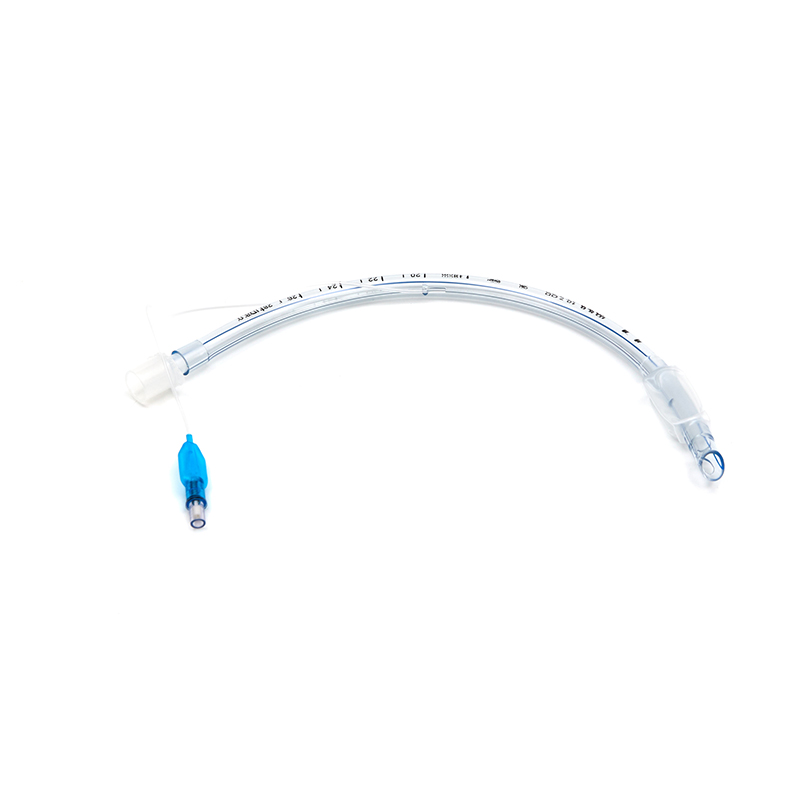Introduce:
In the field of anesthesia airway management, endotracheal tube plays an important role. This important medical consumable is used in a variety of procedures, such as providing direct access to the trachea during surgery or facilitating mechanical ventilation in critically ill patients. In this article, we’ll delve into the details of endotracheal tubes, exploring their components, design, benefits, and most importantly, how to select and use them effectively. By the end of this article, the reader will have a deeper understanding of endotracheal tube and its importance in the medical field.
Components of endotracheal tube:
An endotracheal tube is composed of multiple components that work seamlessly together. The basic components include the tube itself, the inflatable cuff, and the connectors. The tube is usually made of flexible plastic or rubber and can be easily inserted into the trachea. Connectors are essential for connecting tubes to other devices, such as ventilators, to facilitate artificial respiration. Once the tube is properly placed in the trachea, an inflatable cuff located near the distal end of the tube inflates, creating an airtight seal and preventing air and other harmful substances from leaking into the lungs.
Designs and variations:
Endotracheal tubes are available in a variety of designs and sizes to accommodate different patient populations and clinical situations. The most common design is the cuffed endotracheal tube as it ensures a secure seal and minimizes the risk of aspiration. However, for certain procedures or patients, uncuffed endotracheal tubes may be used. Additionally, there are specialized designs, such as laser-resistant or dual-lumen endotracheal tubes, for unique surgical interventions. It is critical to select the appropriate tube design based on the patient’s age, condition, surgery, and any specific requirements imposed by the healthcare provider.
Advantages of endotracheal tube:
The advantages of endotracheal tubes are numerous and significant. First, they provide a safe airway during surgery, maintain oxygenation, and ensure adequate ventilation. This ability is particularly important when patients undergo surgery under general anesthesia, where complete control of the airway is required. Endotracheal tubes help deliver anesthetic gases, oxygen, and medications directly to the patient’s lungs, maximizing their effectiveness. Additionally, they effectively clear secretions, provide access to suction, and protect the airways from potential obstruction.
Advantages of using endotracheal tube:
Disposable endotracheal tubes have additional advantages over reusable tubes because they eliminate the risks associated with inadequate cleaning and disinfection. By using disposable tubing, healthcare providers can maintain higher standards of infection control and minimize the chance of cross-contamination. Additionally, disposable tubes require no repairs and maintenance, saving healthcare facilities valuable time and resources. The availability of disposable tubes in various sizes reduces the risk of using an inappropriate tube.
Effective selection and use of endotracheal tubes:
Several factors should be considered when selecting endotracheal intubation. These include the patient’s age and clinical condition, the planned procedure or procedures, and the health care provider’s experience and preferences. Proper tube size is critical to avoid complications such as endotracheal tube obstruction or excessive air leakage. Using proper technique and following guidelines for intubation and cuff inflation are critical to ensuring optimal patient outcomes. Regular monitoring, including chest X-rays, can confirm proper catheter placement and detect any potential complications.
In conclusion:
In summary, endotracheal tube is an indispensable medical consumable for anesthesia airway management in various clinical settings. Understanding their components, design, and benefits is critical to selecting and using them effectively. By selecting appropriate tube design and size and ensuring proper insertion and cuff inflation techniques, healthcare providers can ensure safe and successful airway management. Ongoing education and compliance with recommended practices regarding the use of endotracheal intubation are essential to improve patient outcomes and optimize anesthesia and ventilation during surgery.
Post time: Oct-24-2023


